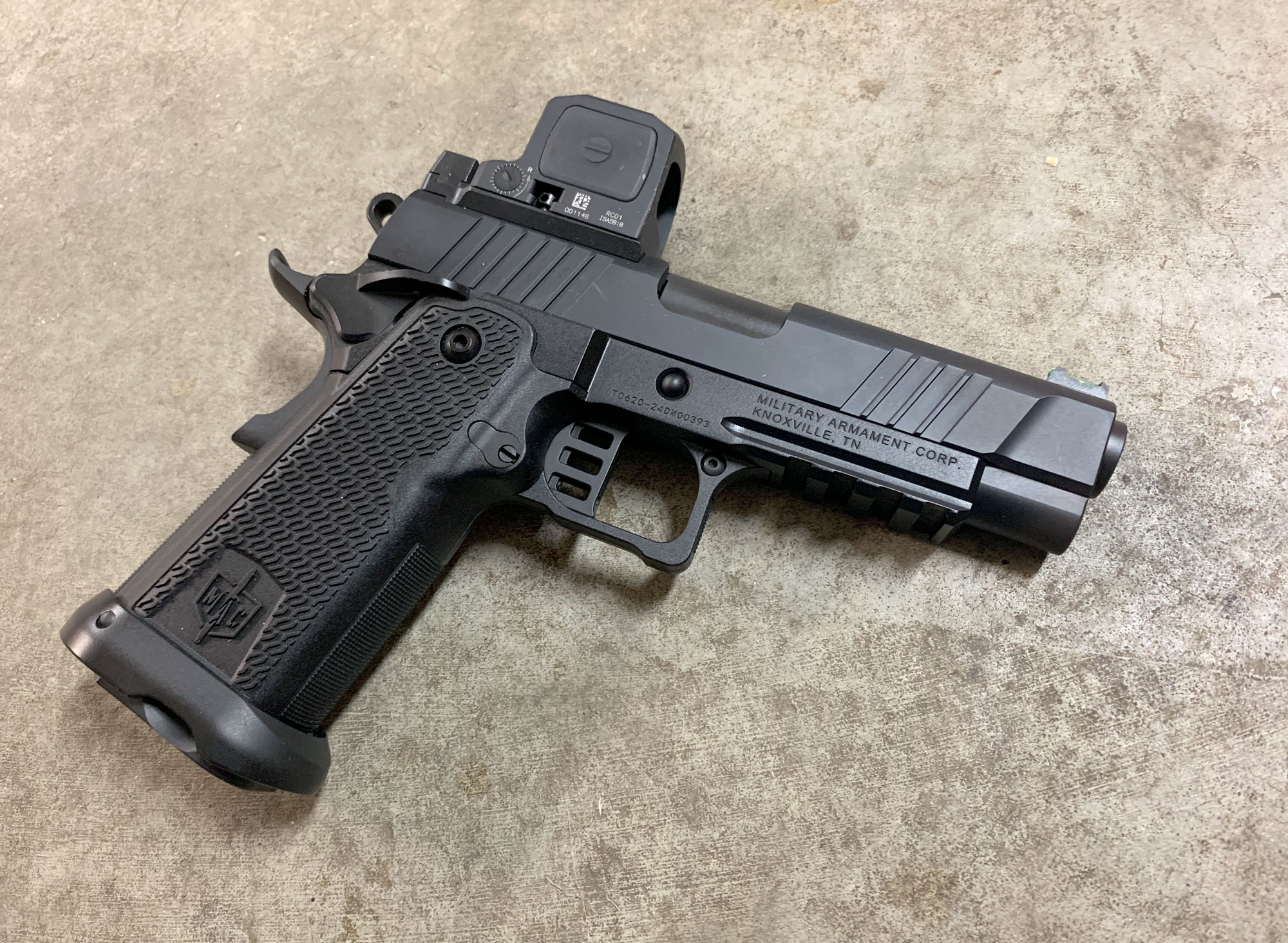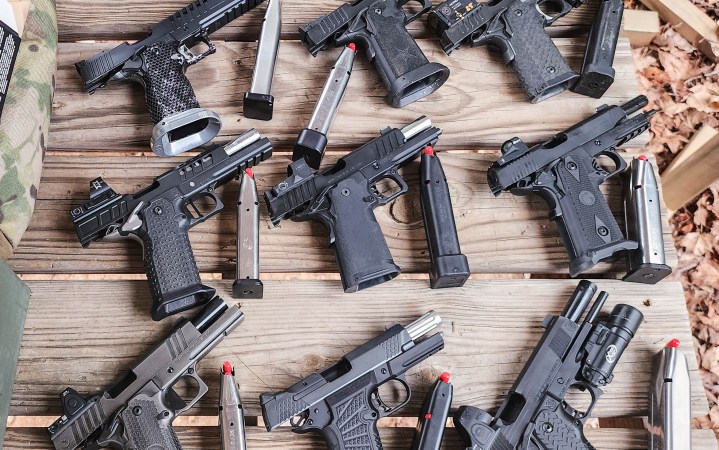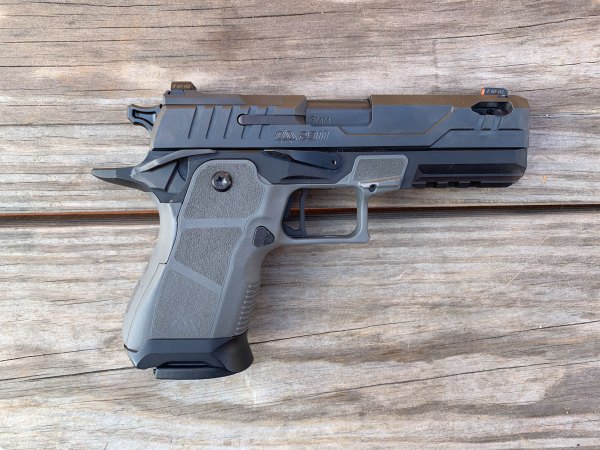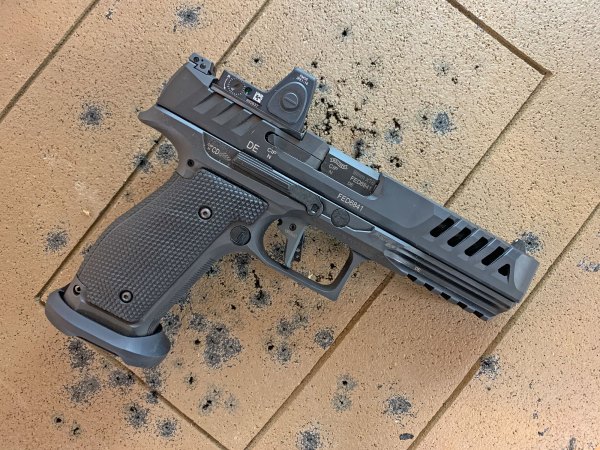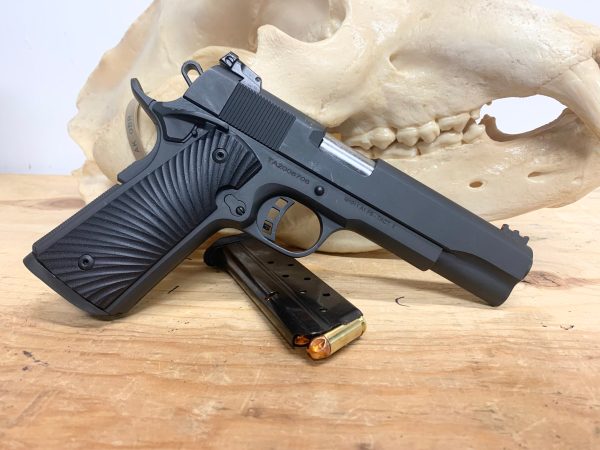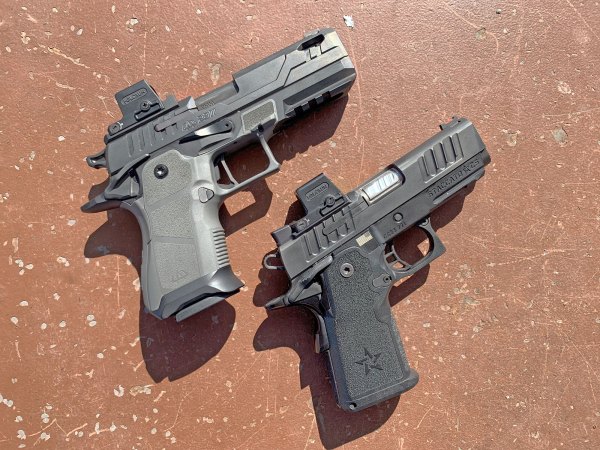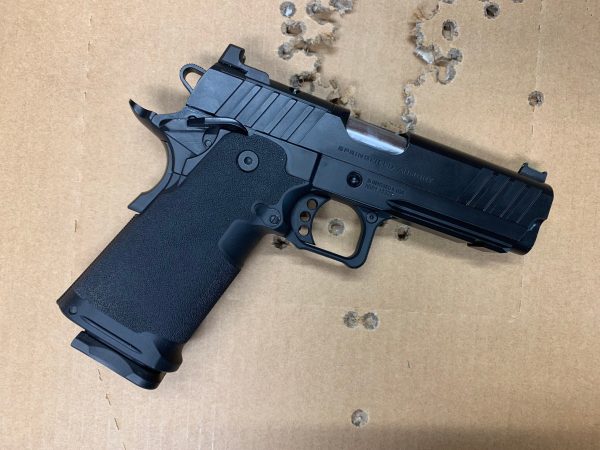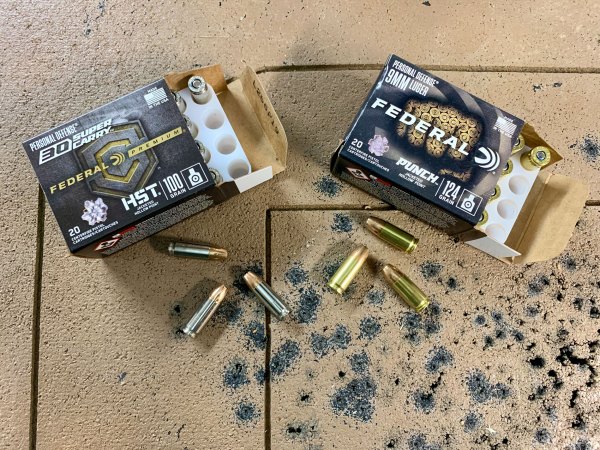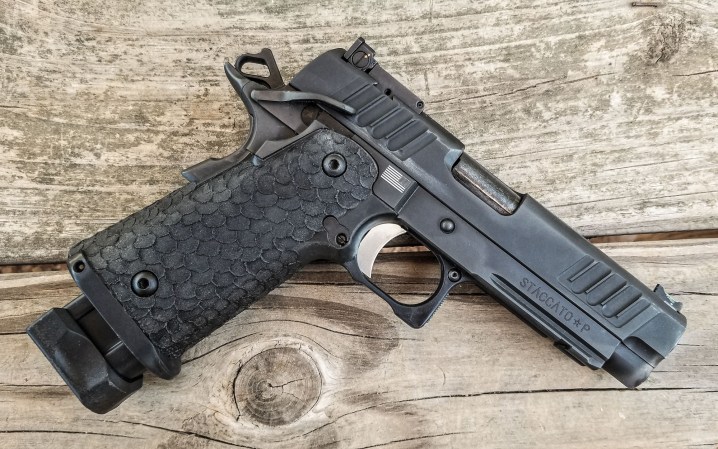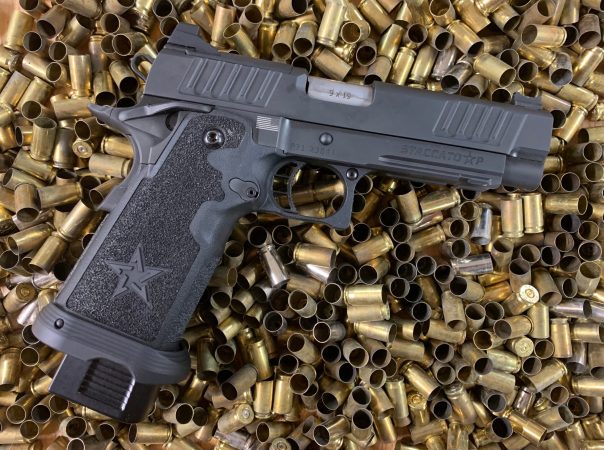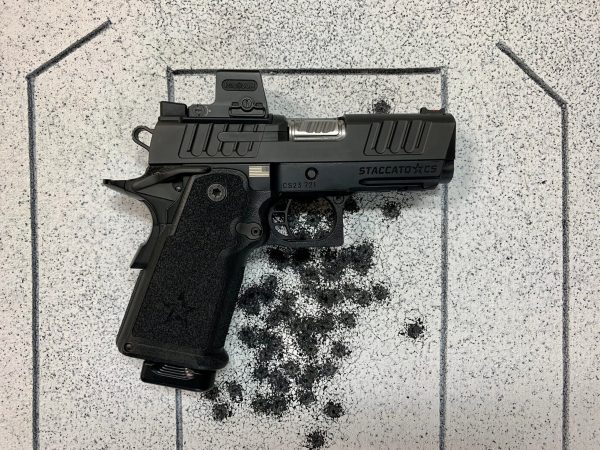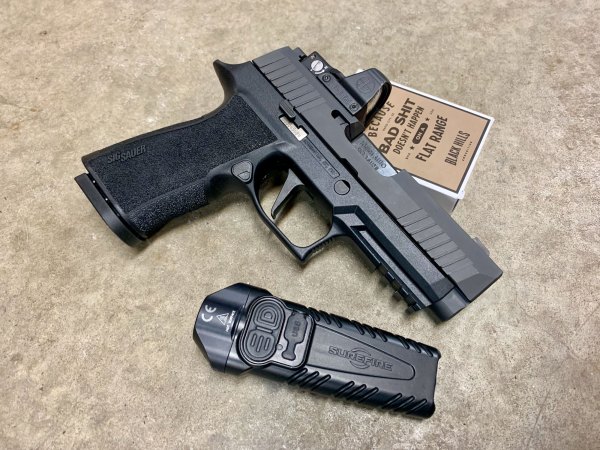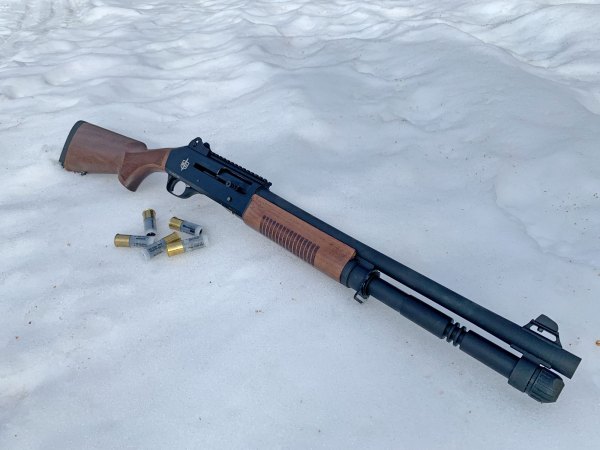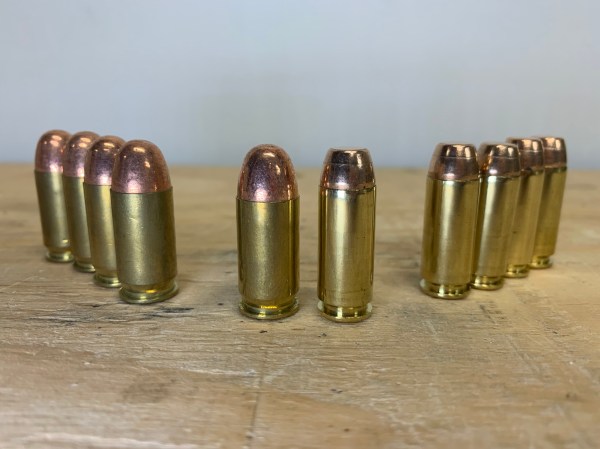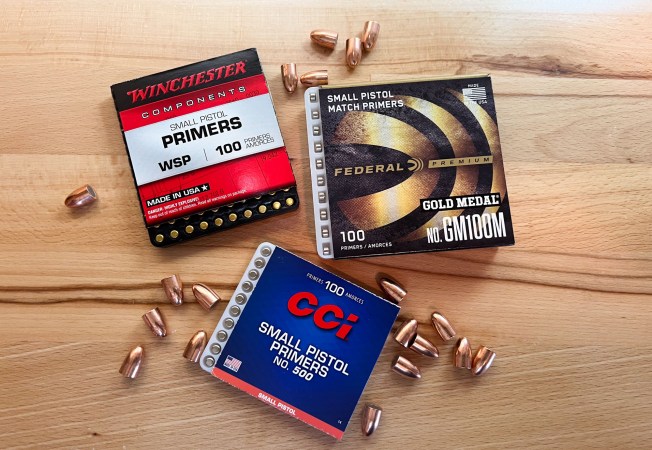We may earn revenue from the products available on this page and participate in affiliate programs. Learn More ›
Double-stack 1911 pistols in 9mm have been gaining momentum in the handgun market and this new model from Military Armament Corporation hopes to capitalize on that. One factor that previously kept 2011-style pistols from being widely popular is price. A few years ago, there weren’t many options for a prospective shooter that didn’t cost more than $2,000, and production models were limited. As more have become available, other gun makers — namely Turkish companies like TISAS and MAC — have made their own entries into the market. These pistols are much more attainable than premium brands like Staccato, and potentially offer similar but more-affordable guns. The hard truth is that you generally get what you pay for with guns. That being said, there are affordable guns that do prove to be a great value and can bridge the gap between bargain-basement pistols and premium ones. I’ve seen a mixed bag of Turk pistols as far as quality goes, but I hoped that after running (fate willing) a thousand rounds through the MAC 9 DS 9mm, it would prove to be a good value.
MAC 9 DS 9mm Specs
- Caliber: 9mm
- Capacity: 17+1
- Magazine Material: Steel
- Dimensions: 6 inches (H) x 8 inches (L) x 1.325 inches (W)
- Weight: 2 pounds, 5 ounces (weighed with empty magazine, no optic)
- Frame: Forged 4140 Carbon Steel, Cerakote Black finish
- Slide: Forged 4140 Carbon Steel, black QPQ Tenifer finish
- Barrel: 4.25-inch, 4140 forged Carbon Steel, bull profile
- Sights: Green fiber optic front, black u-notch rear (drift adjustable)
- Optic ready: Yes, includes RMR optic plate
- Trigger: Single-action, flat shoe, 3 pounds 4 ounces (measured)
- Safety: Ambidextrous thumb safety and grip safety
- Price: $1,035
Key Features
- Forged carbon steel frame, slide, and barrel
- 2011-style polymer grip module with aluminum magwell
- Ambidextrous thumb safety
- Good sights
- Optic-ready
- Compatible with 2011 magazines
Review Highlights
- Simple but good finishes
- Good slide fit and safeties aren’t sloppy
- Nice trigger
- Rougher feel than a Staccato 2011
- Recoil spring is too heavy
- Great accuracy
- Price: $1000
Gangbusters for Budget Double Stack 1911 9mm pistols
In 2022, Springfield shook up the double-stack 1911 market with their Prodigy — a pistol that incorporated many design features of premium 2011 pistols like the Staccato P, but costing nearly $1,000 less. The Prodigy brought a lot of interest to the world of 2011 pistols but more importantly, gave us an entry-level model that was within financial reach of more shooters. Naturally, more have followed, and this year we see several models from Turkish gun makers that are even more affordable. One that immediately caught my eye — even before I noticed their Benelli M4 clone — was the MAC 9 DS 1911 Double Stack 9mm.
The MAC 9 DS 9mm is priced at $1,000 bucks and, besides looking like a poor-man’s Staccato P, the pistol looked to be simple and not overdone. My biggest gripe about some budget import guns is that they’re trying to be something they’re not — usually at the expense of quality. I’d rather see simple, well-executed features. The Taylor’s & Company Tactical 1911 in 10mm I reviewed last year is a great example of that.
I first test fired the MAC 9 DS at SHOT show, and it seemed to have a good trigger and functioned well. It showed enough promise for me to give it a more thorough evaluation. I’m always rooting for the underdog gun, hoping to find pistols that out-perform their price tag. I don’t expect them to equal premium pistols but, in the case of a 2011-style pistol with a decent trigger and features — the idea of a quality budget option is appealing.
The MAC 9 DS: Features Of A 2011-Style Pistol
If you’re new to the 1911 double-stack 9mm style of pistol, there are a few defining characteristics that are helpful to know about when examining pistols in this category. Because they trademarked the term, the only true 2011 pistols are Staccatos. Staccato 2011, formerly STI, has specialized in double-stack 1911 pistols for many years and, more recently, consolidated their lineup. There is a spectrum of prices and quality levels for double-stack 1911 9mms, but for a full-sized pistol like the MAC 9 DS, the Staccato P is the high-water mark.

2011-Style Frame and Grip Module
By and large, these pistols operate like a regular 1911 and use many 1911 parts. The most notable difference is their frame. Pistols like the MAC 9 DS have a steel (some others use aluminum) frame that a polymer grip module attaches to. The traditional 1911 and early double-stack 9mm versions like the Para Ordnance pistols have a frame that includes the grip of the gun, and grip scales are attached to it. That’s not the case with 2011-style pistols. The entire grip is a polymer module that includes the trigger guard and attaches to a shorter frame just below the slide.
The frame on some 2011s and similarly-styled pistols use a single-slot accessory rail, but the MAC 9 DS has a 4-slot Picatinny-style rail in front of the trigger guard.

Bushingless Bull Barrels
These aren’t entirely unique to double-stack 9mm 1911s like the MAC 9 DS, but most of these pistols employ a heavy bull barrel and no traditional barrel bushing that you’d see on a 1911. The recoil spring rides on a full-length guide rod and is retained by a spring plug that fits into the dust cover of the slide from the rear — not the front like a traditional 1911.
Double-Stack, Bottlenecked Magazines
The magazines of full-size double-stack 1911 9mm pistols are mostly similar, and many of them are interchangeable, or the pistols are designed to work with Staccato mags in the first place. Standard magazines hold 17 rounds, have a thin baseplate, and bottleneck down to a single-stack profile at the top. The MAC 9 DS comes with three TISAS magazines that worked fine in the MAC 9 DS. The MAC 9 DS worked just as well with Staccato magazines, and my Staccato ran fine with the TISAS mags. The TISAS magazine baseplates aren’t as nice, but I can’t complain about their functionality.

How Does the MAC 9 DS 1911 Double Stack 9mm Measure Up?
The question asked about any budget 2011-style pistol is how does it stack up to a Staccato? Though understandable, I think that it’s only fair to ask when considering its price too. It would be unreasonable to expect a $1,000 pistol to equal a $2,500 pistol. However, considering the Staccato P as a standard reference point is helpful to understand what the MAC 9 DS is and what it isn’t.
Fit and Finish
The MAC 9 DS uses different finishes for its frames, slides, and barrels, but it seems to be simple and well-executed. Compared to the Springfield prodigy, I think it was a wise choice to go with the QPQ-type finish on the slide — rather than full Cerakote. The QPQ finish isn’t at the level of, but is similar to a DLC finish in function and appearance. I wasn’t a huge fan of the Cerakote on the prodigy, as it is more vulnerable to chipping and is thicker than a DLC, Tenifer, or Melonite QPQ finish. There’s no two-tone powder-coat BS, which I like.
There is some side-to-side play in the slide to frame relationship, but overall it’s pretty tight, even after 1,000 rounds. The safety levers aren’t as butter-smooth as the Staccato P, but they aren’t too stiff, and after testing they still have no sloppiness or wobble. Operation is still crisp and easy. All the controls have held up really well and I haven’t noticed any excessive or strange wear.
Sights and Optics
Similar to pistols like the Staccato P, the MAC 9 DS comes with a green fiber-optic front sight that’s dovetailed into the slide. At the rear, it’s got a black serrated U-shaped rear notch side that is held in place by a set screw and is adjustable for windage. The rear sight is mounted on a steel optic-cut cover plate that can be easily removed and replaced with the included RMR-pattern optic plate. The optic plate also has a rear sight that can be co-witnessed with some RMR sights, I set mine up with the enclosed-emitter Trijicon RCR red dot.
Barrel and Recoil System
The MAC 9 DS 1911 Double Stack 9mm has a bull-profile barrel that, like similar pistols, tapers up to full diameter for a tight fit with the front of the slide. It’s got the standard 1911 pivoting barrel link through which the slide stop lever/takedown pin goes.
The MAC 9 has a simple, primitive style of full-length guide rod and recoil spring that is captured by the spring plug. Many double-stack 1911s used to employ this style of guide rod, where to remove it, the rear of the guide rod is pushed forward, compressing the spring until a small hole in the guide rod becomes visible out the front of the slide. The user then sticks a small 90-degree-bent paper clip or thin wire in the hole and releases the guide rod, and the piece of wire stops the spring plug — keeping the spring compressed. The Springfield Prodigy has a guide rod like this, and though it’s not as nice or easy as the Dawson Precision guide rod that the Staccato uses, it’s effective.
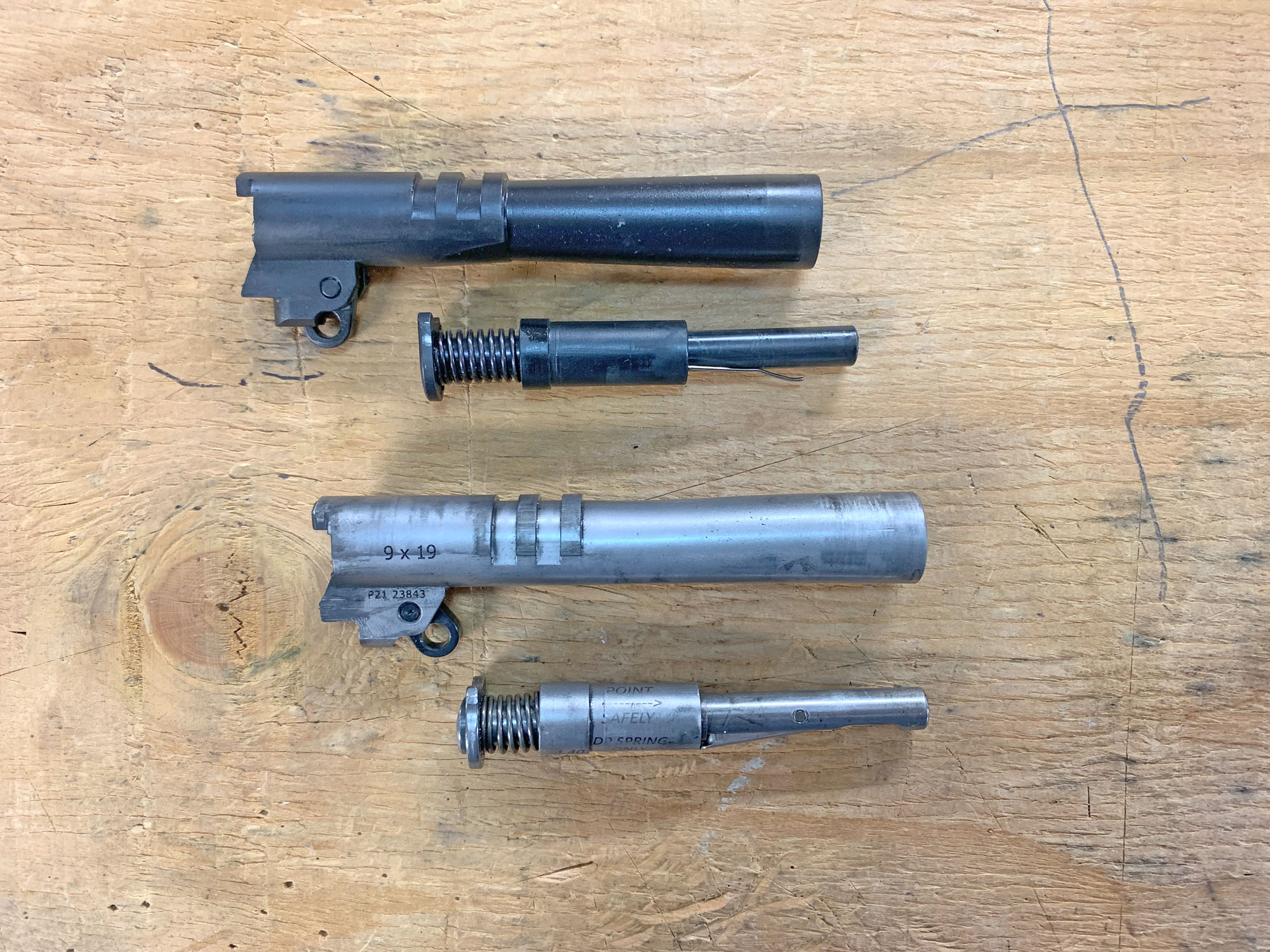
I did immediately note that my MAC 9 DS has a much stiffer recoil spring than my Staccato P. I began range testing with a bunch of my 124-grain FMJ handloads that are fairly mild, but have cycled every pistol I’ve put them through. The MAC 9 DS wouldn’t cycle them, and my Staccato P would. I swapped recoil springs between the MAC 9 DS and my Staccato P, and then the Staccato wouldn’t run the ammo. Normal factory ammo cycled the MAC 9 DS without issue. The only factory ammo I had any malfunctions with was the Mag Tech steel-case ammo. They weren’t regular, but a few times, the cases slipped the extractor, sticking in the chamber.
Ergonomics, Handling, and Controls
The MAC 9 DS looks similar to a Staccato P, but the guns feel quite different. You’re not getting something for nothing, and the MAC 9 DS has tangibly less refined ergonomics and controls. Though nicely executed, the slide cocking serrations are shallower, and where the Staccato seems to melt into my hand, the MAC 9 DS feels a little sharp and unwelcoming in comparison. I think it’s quite good for its price range, but there is a definitive difference. I could shoot rapidly and accurately, but it was a sharper, harsher feel than the Staccato provides.
Controls like the safety, slide stop, magazine catch button, and details like the sharpness of the trigger guard and refinement of the magwell are all just a bit rougher than higher-end pistols. That said, the overall level of function and performance is good — especially compared to most pistols in the striker-fired category.
My sample MAC 9 DS has a really good trigger, with about the same amount of takeup as my Staccato P, and breaks consistently at 3 pounds, 4 ounces. The reset is significantly weaker, with not much spring tension driving it and a softer, less noticeable click than the Staccato has. Still, I had no problem shooting quickly and breaking clean shots — especially in quick strings of fire at 25 yards or when shooting groups for accuracy. All-in-all, I think this gun offers the shooter great performance for the price.
Accuracy
I tested the MAC 9 DS Double Stack 1911 9mm for accuracy following our standard protocol — I recorded 21 5-shot groups from 15 yards from a standing position, using a bagged tripod for support. I also recorded 6 5-shot groups at 25 yards with some of the most accurate ammo.
The overall average of 5-shot groups fired at 15 yards was 1.484 inches, with the following averages from each type of ammo:
- Staccato 2011 125-grain Match: 1.242 inches
- Federal 124-grain Punch JHP: 1.298 inches
- Hornady 135-grain Critical Duty: 1.473 inches
- Nosler 115-grain ASP JHP: 1.564 inches
- Black Hills 125-grain Honeybadger: 1.956 inches
Six total groups from 25 yards with the Staccato Match ammo averaged an impressive 2.117 inches.
This pistol was quite accurate, not lagging far behind more expensive match pistols I’ve tested like the Dan Wesson DWX, Walther PDP Steel Frame Match, and the Staccato P.
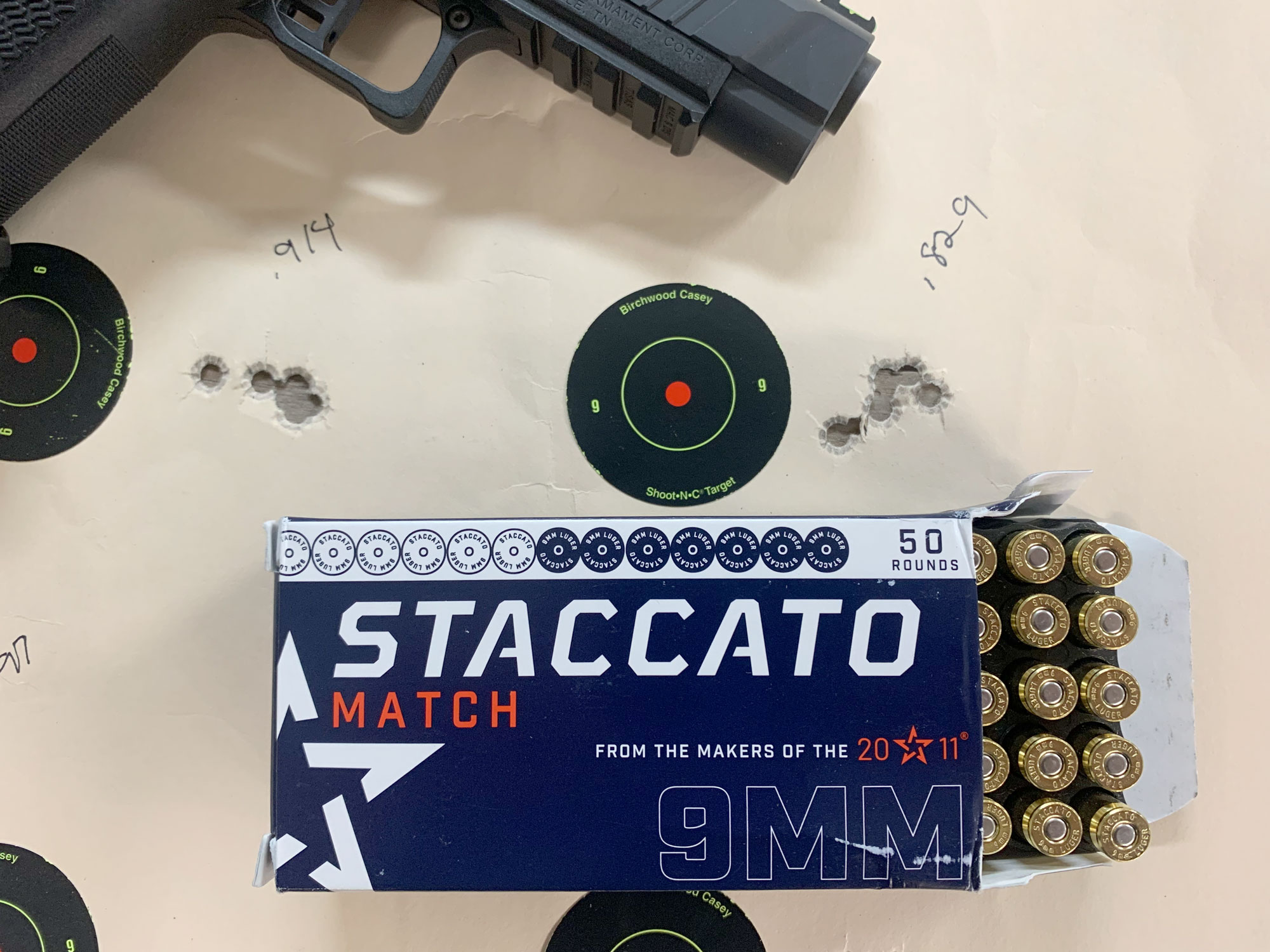
What does the MAC 9 DS 1911 Double Stack 9mm Do Well?
I think that the MAC 9 DS is a well-executed pistol within its price range. It’s not overdone. It’s accurate, with a good trigger, good magazines, good optic-compatibility, and other features and performance that make it a great value for the price.
Where Could The MAC 9 DS 1911 Double Stack 9mm Be Better?
I think that some refinement of the controls is an obvious area for improvement, but remember, this isn’t a $2,500 pistol. I think an attainable expectation would be for a bit softer feel, especially around the trigger guard.

Takeaways From Putting 1,000 Rounds Through the MAC 9 DS
I think that within reasonable expectations for a $1,000 2011-style pistol, this is a gem. I would be perfectly happy with what I got for that price, and I’m objectively impressed with this gun. It’s really accurate, and I think would make an ideal entry-level gun for someone who’s interested in double-stack 1911 9mm pistols, but isn’t ready to shell out for a Staccato or something more expensive. There’s no free lunch, but this is a platform that would serve an entry-level shooter well, with the option for readily available upgrades and aftermarket parts. A skilled shooter with entry-level equipment, who practices a lot, will always out-shoot a mediocre shooter that buys the best equipment. One of these pistols and a few thousand rounds of ammo would put any dedicated action-pistol student well on their way.

